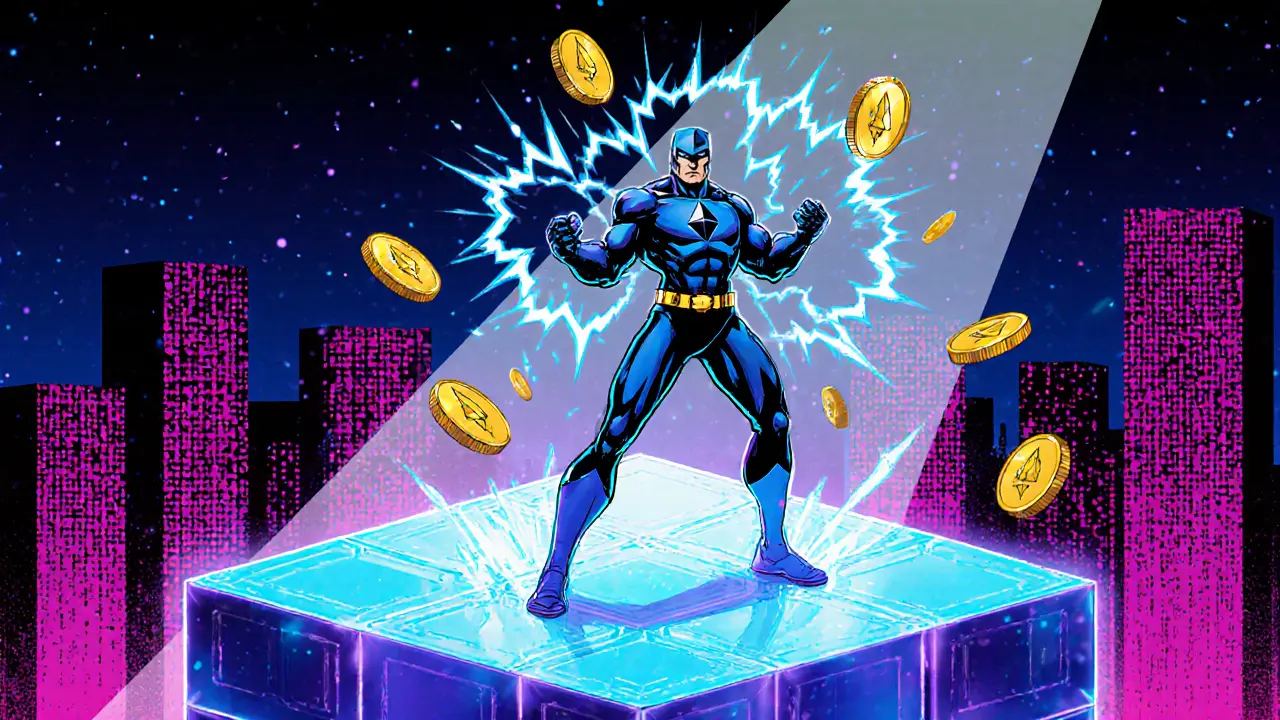EVM: The Engine Behind Modern Crypto Applications
When working with EVM, the Ethereum Virtual Machine, a sandboxed runtime that executes code on the Ethereum blockchain. Also known as Ethereum Virtual Machine, it provides the consistent environment developers need to build decentralized apps. The Ethereum, the public, permissionless blockchain that hosts the EVM supplies the ledger, while smart contracts, self‑executing programs that enforce rules without a middleman are the actual pieces of logic run inside the machine. To keep the network from being spammed, each operation costs gas fees, the tiny amount of cryptocurrency paid to miners or validators for processing transactions. In short, EVM enables smart contracts, Ethereum provides the underlying chain, and gas fees limit execution – a three‑way relationship that keeps the system secure and functional.
Why EVM Compatibility Matters for Tokens and DeFi
One of the biggest advantages of the EVM is its ability to standardize token formats. Developers use the ERC‑20 standard for fungible tokens, ERC‑721 for unique NFTs, and ERC‑1155 for semi‑fungible assets—all of which run on the same virtual machine. Because the EVM interprets these contracts the same way everywhere, a DeFi platform can swap ETH for a new ERC‑20 token without rewriting core logic. This interoperability extends to cross‑chain bridges that let assets move between Ethereum, Binance Smart Chain, Polygon and other EVM‑compatible networks. The result is a thriving ecosystem where liquidity pools, yield farms, and lending protocols can share code, security audits, and user wallets. In practice, if you already have a wallet like MetaMask, you can interact with dozens of DeFi apps without installing anything new – all thanks to the shared EVM runtime.
Scaling the EVM is another hot topic. As user demand grew, developers introduced layer‑2 solutions such as Optimistic Rollups and ZK‑Rollups to process transactions off‑chain while still relying on the EVM for final settlement. Sharding, a future upgrade, will split the blockchain into smaller pieces, letting each shard run its own EVM instance and process more transactions in parallel. These advances change the cost and speed of gas fees, but the core principle stays the same: the EVM validates each operation before it becomes part of the immutable ledger. Understanding these upgrades helps you gauge when a protocol might become cheaper to use or more secure against attacks.
For developers and everyday users alike, tooling matters. IDEs like Remix, frameworks such as Hardhat or Truffle, and wallet extensions like MetaMask translate high‑level code into bytecode the EVM can run. When you write a Solidity contract, the compiler turns it into EVM bytecode, which the network then executes step by step, charging gas for each instruction. This pipeline is why learning the EVM’s quirks—like the 2300‑gas stipend for payable functions—can save you both time and money. It also explains why bugs in smart contracts can be costly: once the EVM records a state change, it’s immutable unless the contract includes an upgrade mechanism.
With that groundwork laid, you’re ready to explore the specific articles we’ve gathered. Below you’ll find deep dives on mining difficulty, airdrop safety, regional crypto regulations, token analyses, and more—all tied back to the EVM’s role in the broader blockchain landscape. Whether you’re hunting for the next airdrop, vetting a new DeFi protocol, or just curious about how gas fees affect your trades, the posts ahead give practical insights you can act on right now.

How Ethereum Smart Contracts Work: A Beginner’s Guide
A clear guide explains how Ethereum smart contracts work, covering the EVM, Solidity, gas fees, deployment steps, oracles, token standards, limitations, and best practices.
August 19 2025